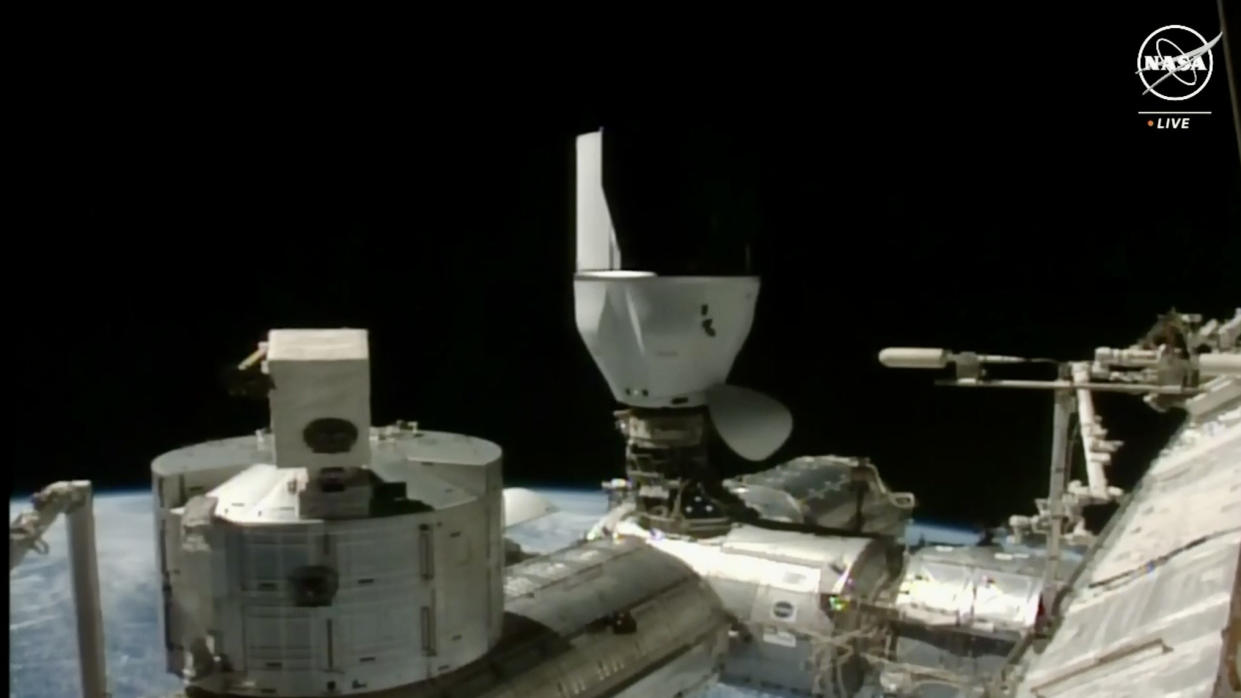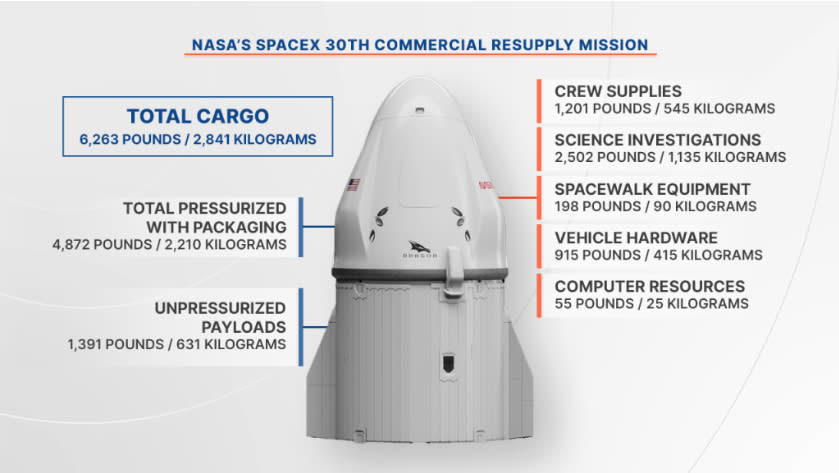SpaceX's Dragon capsule docks at ISS on 30th cargo mission for NASA

After an orbital chase lasting a day and a half, SpaceX's Dragon cargo spacecraft rendezvoused and docked with the International Space Station (ISS) early Saturday morning (March 23).
The uncrewed spacecraft launched on Thursday afternoon (March 21) from Cape Canaveral Space Force Station in Florida.
Rendezvous occurred Saturday morning. Monitored by NASA astronauts Laurel O'Hara and Mike Barratt from inside the ISS Cupola module, the spacecraft autonomously docked to the zenith port of the station's Harmony module at 7:19 a.m. EDT (1119 GMT), soaring 262 miles (421 kilometers) above the south Atlantic Ocean, just west of Africa.
Related: International Space Station: Everything you need to know about the orbital laboratory
CRS-30 cargo breakdown:
Crew Supplies: 1,201 pounds / 545 kilograms
Science investigations: 2,502 pounds / 1,135 kg
Spacewalk equipment: 198 pounds / 90 kg
Vehicle hardware: 915 pounds / 415 kg
Computer resources: 55 pounds / 26 kg
This is SpaceX's 30th commercial resupply mission to the ISS, which explains the flight's name — CRS-30. With today's arrival, Dragon delivered 6,263 pounds (2,841 kilograms) of fresh food, research experiments and station maintenance hardware for the station's current crew. Dragon's trunk also contains a new spare pump for the space station's external thermal loop system.

RELATED STORIES:
— SpaceX Dragon breaks 2 space shuttle orbital records
— SpaceX launches its 30th Dragon cargo mission to the ISS (video)
— International Space Station: Live updates
Dragon will remain docked to the ISS for about five weeks on CRS-30 before returning to Earth.
Unlike Northrup Grumman's Cygnus cargo vehicle, or the Roscosmos Progress spacecraft, SpaceX's Cargo Dragon is capable of atmospheric reentry and recovery after a parachuted splashdown in the ocean. NASA utilizes this ability to return experiments from the station, as well as discarded waste.